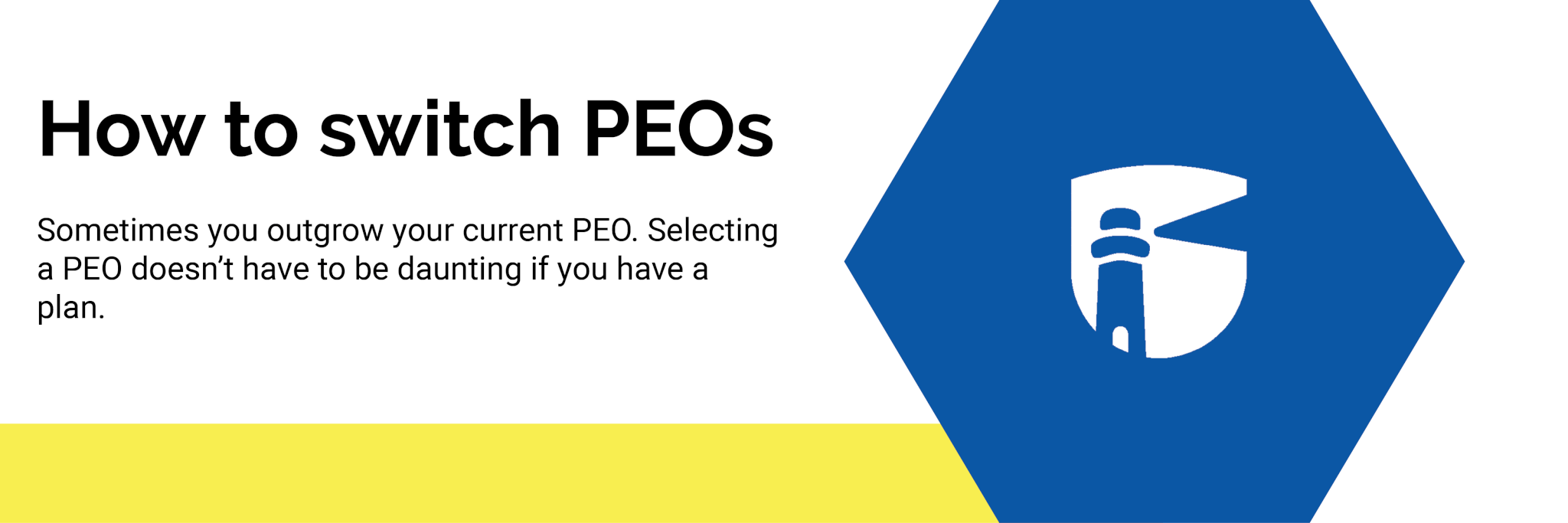As businesses grow and evolve, so do their HR and administrative needs. Professional Employer Organizations (PEOs) have become a popular choice for handling essential HR functions, payroll, benefits, and compliance. However, there may come a time when a company decides to switch PEO providers to better align with their changing requirements. Making this transition smooth and hassle-free is crucial to maintaining business continuity. In this blog, we’ll explore the steps needed to switch PEO providers seamlessly while minimizing disruptions and maximizing benefits.
1. Evaluate Current PEO Services and Identify Pain Points
Before initiating the switch, conduct a thorough evaluation of your current PEO services and performance. Identify any pain points, shortcomings, or areas where your current provider may be falling short of meeting your expectations. This evaluation will help you understand the specific needs and priorities for your new PEO.
2. Research and Compare Alternative PEO Providers
Now that you know what you need from your new PEO, research and compare different providers in the market. Consider factors like services offered, cost, reputation, client reviews, and industry experience. Look for a PEO that aligns closely with your company culture and long-term goals. A simple Google search for, “Best PEO providers for small businesses” should provide decent options when switching PEOs.
3. Conduct a Comprehensive Due Diligence
Perform due diligence on the shortlisted PEO candidates. Request references from their existing clients to gain insights into their service quality and responsiveness. Verify their credentials, compliance history, and financial stability to ensure you are partnering with a reputable and reliable provider. When going through your PEO due diligence checklist, don’t forget to ask about internal survey results to gauge the company.
4. Notify Current PEO and Review Contract Terms
Once you’ve selected a new PEO, inform your current provider of your decision to switch. Review your existing contract to understand any termination clauses, notice periods, and potential penalties. Adhere to the contractual obligations to maintain a positive business relationship and avoid any legal entanglements. Don’t be surprised if the old PEO tries to entice you will lower rates, but the same service you’re trying to leave from. When notifying a PEO provider of switch, make sure your W-2s and tax situation have been addressed in order to avoid fees, and penalties.
5. Plan and Coordinate the Transition
Create a detailed transition plan in collaboration with your new PEO. Address timelines, data migration, payroll, and benefits transfers, and other critical aspects. Assign a transition team within your organization to coordinate with the new PEO and ensure a smooth handover of responsibilities. Most companies won’t need a full blown PEO transition checklist, you’re new provider will specifically tell you what is needed to get started with them.
6. Transfer Employee Data Securely
Data security is paramount during the transition. Work with both PEOs to ensure that employee data, payroll information, and sensitive records are transferred securely and in compliance with data protection regulations.
7. Communicate with Employees
Transparent communication with your employees throughout the transition is essential. Inform them of the switch, any changes in benefits or policies, and address any concerns they may have. Keeping employees informed and engaged will contribute to a positive transition experience. Your employees are going to notice the changes to their paycheck, and employee self service portal so it’s important to keep them in the loop.
Wrapping up PEO transition best practices
Switching PEO providers might seem like a daunting task, but with proper planning and execution, it can be a seamless process that benefits your business in the long run. Evaluate your current PEO, research new options, conduct due diligence, and plan the transition carefully. By following these steps, you can make the switch with minimal disruption, ensuring continued HR support and compliance for your growing business.
Copyright 2025



